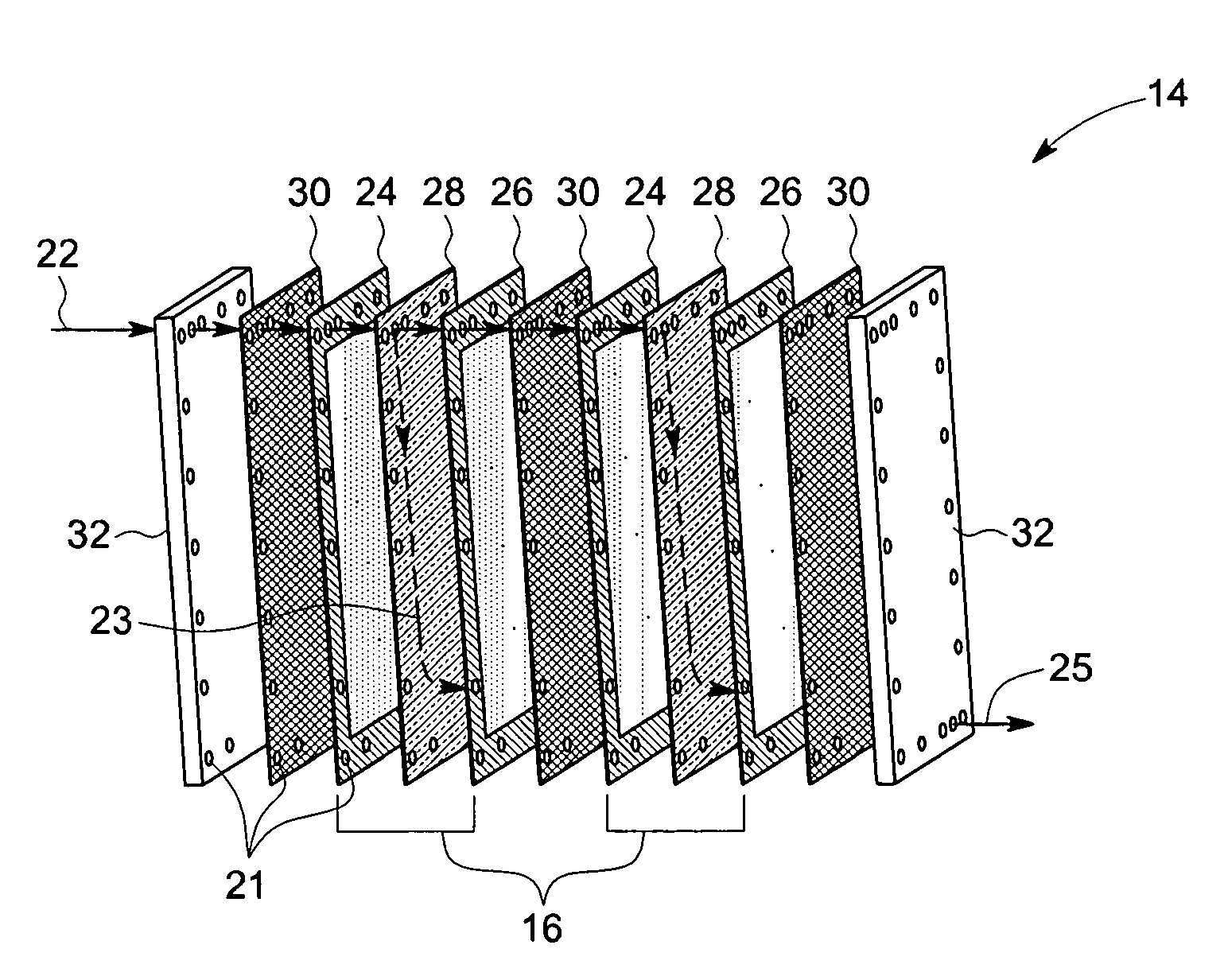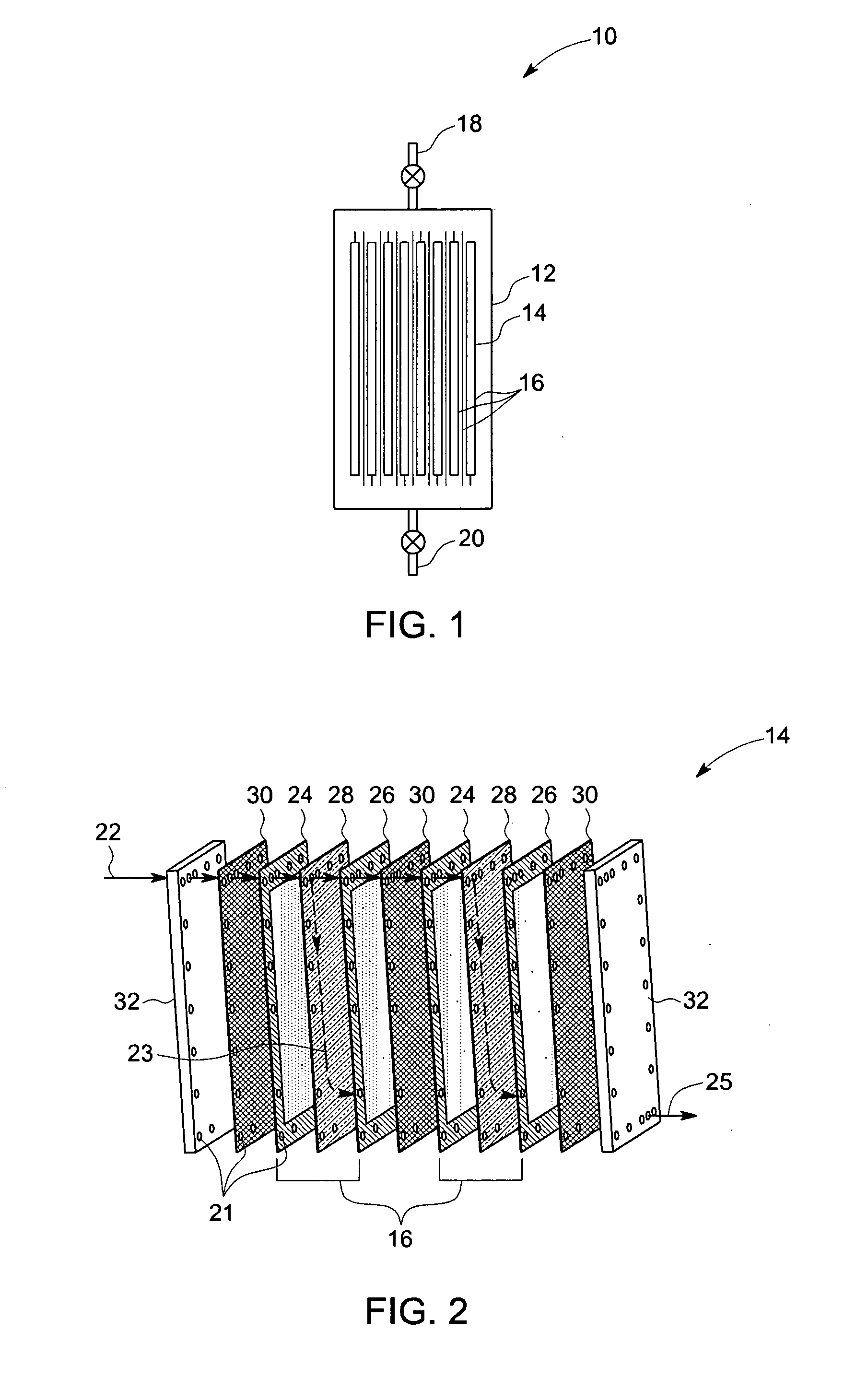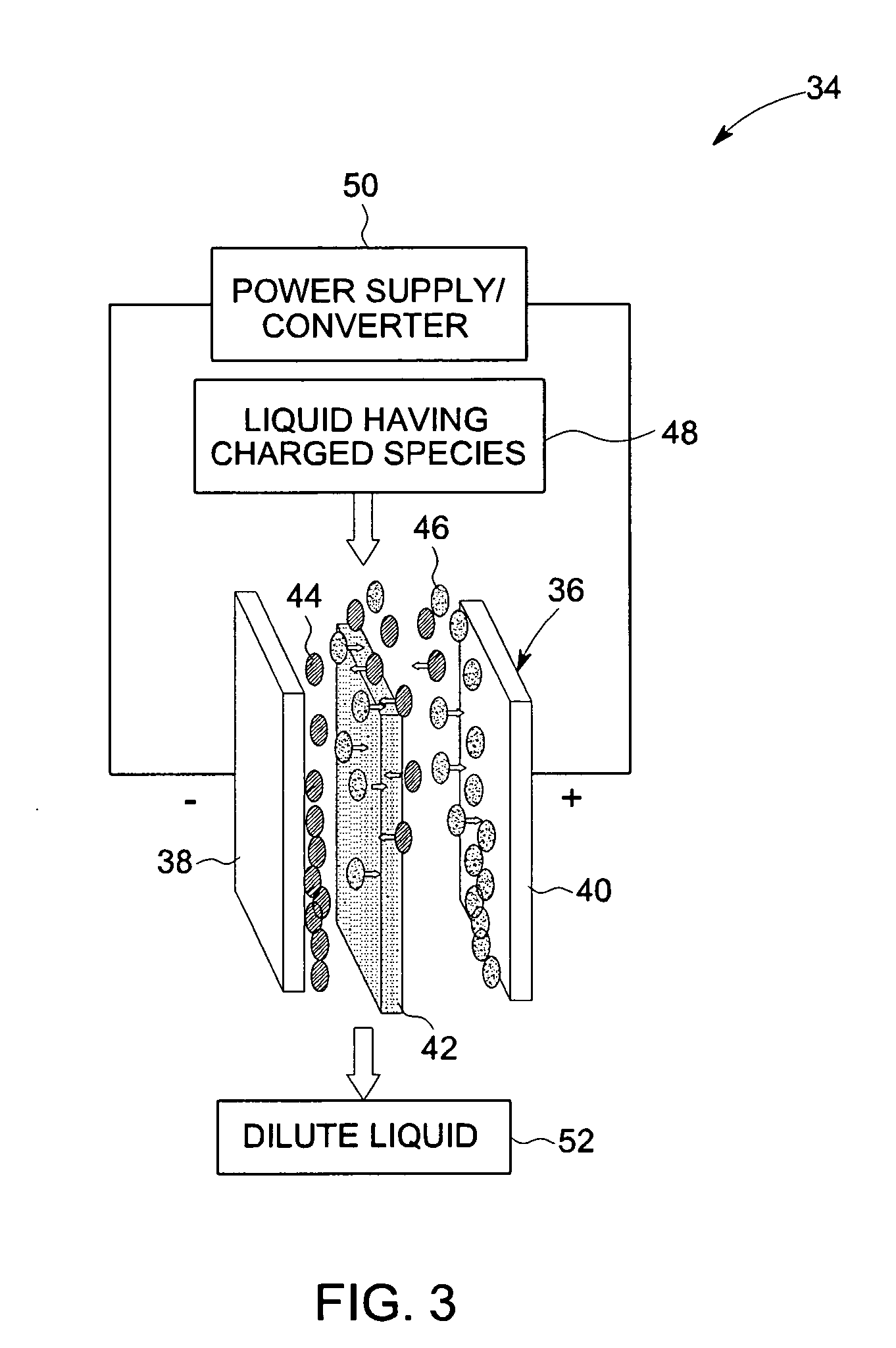Supercapacitor desalination devices and methods of making the same
a technology of desalination device and supercapacitor, which is applied in the direction of filtration separation, lighting and heating apparatus, separation process, etc., can solve the problems of low tds level, cost of process, cost of energy consumption,
- Summary
- Abstract
- Description
- Claims
- Application Information
AI Technical Summary
Benefits of technology
Problems solved by technology
Method used
Image
Examples
Embodiment Construction
[0019]A supercapacitor desalination (SCD) cell is typically employed for desalination of seawater or de-ionization of other brackish waters to reduce the amount of salt to a permissible level for domestic and industrial use. Such a cell may also be used to remove or reduce any other ionic impurities from a liquid.
[0020]In certain embodiments, a supercapacitor desalination cell may include a first electrode, a second electrode, and an insulating spacer disposed therebetween. For the purpose of purification of a liquid by de-ionization, several of such cells may be disposed in a container which has provisions for water inlet and outlet. FIG. 1 illustrates a schematic view of an exemplary supercapacitor desalination device 10 employing a desalination vessel 12. The vessel 12 houses a supercapacitor desalination stack 14 having a plurality of supercapacitor desalination cells 16. As will be described below with regard to FIG. 2, each of the plurality of cells 16 includes a pair of elect...
PUM
| Property | Measurement | Unit |
|---|---|---|
| particle size | aaaaa | aaaaa |
| size | aaaaa | aaaaa |
| particle size | aaaaa | aaaaa |
Abstract
Description
Claims
Application Information
 Login to View More
Login to View More - R&D
- Intellectual Property
- Life Sciences
- Materials
- Tech Scout
- Unparalleled Data Quality
- Higher Quality Content
- 60% Fewer Hallucinations
Browse by: Latest US Patents, China's latest patents, Technical Efficacy Thesaurus, Application Domain, Technology Topic, Popular Technical Reports.
© 2025 PatSnap. All rights reserved.Legal|Privacy policy|Modern Slavery Act Transparency Statement|Sitemap|About US| Contact US: help@patsnap.com



